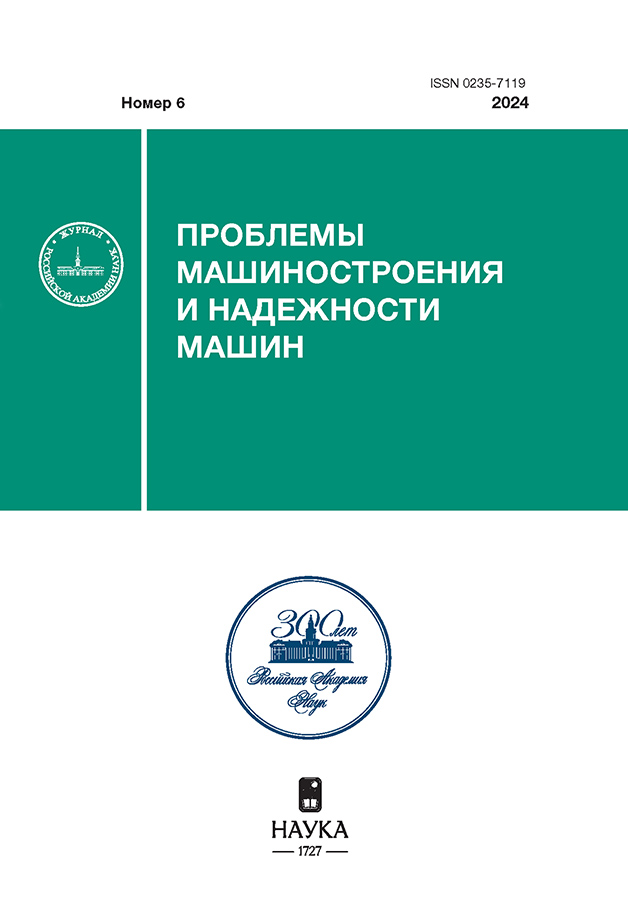Процессы самоорганизации структуры ионно-плазменных покрытий CrTiZrNbHf (ВЭС), полученных по технологии многокатодного дугового напыления
- Authors: Колесников В.И.1, Кудряков О.В.1,2, Варавка В.Н.2, Колесников И.В.1, Политыко К.Н.1
-
Affiliations:
- Ростовский государственный университет путей сообщения
- Донской государственный технический университет
- Issue: No 6 (2024)
- Pages: 16-29
- Section: НАДЕЖНОСТЬ, ПРОЧНОСТЬ, ИЗНОСОСТОЙКОСТЬ МАШИН И КОНСТРУКЦИЙ
- URL: https://edgccjournal.org/0235-7119/article/view/677576
- DOI: https://doi.org/10.31857/S0235711924060026
- EDN: https://elibrary.ru/NPCMLG
- ID: 677576
Cite item
Abstract
Для получения вакуумных ионно-плазменных высокоэнтропийных покрытий системы CrTiZrNbHf была использована система трехкатодного дугового испарения. Среднестатистическая концентрация компонентов в покрытии составила Cr0.30Ti0.35Zr0.25Nb0.08Hf0.01. Кинетика осаждения покрытий и процесс самоорганизации его структуры изучался путем построения зонной структурной диаграммы Мовчана–Демчишина–Торнтона. Такие технологические параметры, как температура подложки, давление в вакуумной камере, скорость осаждения покрытия, плотность ионного тока, напряжение смещения и др. были объединены в виде расчетной величины энергии осаждения Ebi. Показано, что для исследованной системы CrTiZrNbHf критическим значением параметра Ebi является ~100 МДж/см3. Превышение этого порога ведет к вырождению структуры покрытия в виде зародышевой или каплеобразной морфологии.
Full Text
About the authors
В. И. Колесников
Ростовский государственный университет путей сообщения
Email: kudryakov@mail.ru
Russian Federation, Ростов-на-Дону
О. В. Кудряков
Ростовский государственный университет путей сообщения; Донской государственный технический университет
Author for correspondence.
Email: kudryakov@mail.ru
Russian Federation, Ростов-на-Дону; Ростов-на-Дону
В. Н. Варавка
Донской государственный технический университет
Email: kudryakov@mail.ru
Russian Federation, Ростов-на-Дону
И. В. Колесников
Ростовский государственный университет путей сообщения
Email: kudryakov@mail.ru
Russian Federation, Ростов-на-Дону
К. Н. Политыко
Ростовский государственный университет путей сообщения
Email: kudryakov@mail.ru
Russian Federation, Ростов-на-Дону
References
- Fang C. M., Cantor B. An Equiatomic 20-Element High Entropy Amorphous Alloy: Ab Initio Molecular Dynamics Investigations. URL: www.preprints.org (open access article, posted date: 19 February 2024). https://doi.org/10.20944/preprints202402.1010.v1
- Zhang Y., Zhou Y. J., Lin J. P. Solid-Solution Phase Formation Rules for Multi-component Alloys // Advanced Engineering Materials. 2008. V. 10 (6). P. 534.
- Yeh J.-W. Alloy Design Strategies and Future Trends in High-Entropy Alloys // JOM. 2013. V. 65. P. 1759. https://doi.org/10.1007/s11837-013-0761-6
- Zhang R. F., Zhang S. H., He Z. J., Jing J., Sheng S. H. Miedema Calculator: A thermodynamic platform for predicting formation enthalpies of alloys within framework of Miedema’s Theory // Computer Physics Communications. 2016. V. 209. P. 58. https://doi.org/10.1016/j.cpc.2016.08.013
- Yurov V. M., Platonova E. S., Baltabekov A. High entropy coatings CuTiZrCrNi // Norwegian Journal of Development of the International Science. 2019. V. 36. P. 25.
- Ivanov Yu.F., Abzaev Y. A., Gromov V. E., Konovalov S. V., Klopotov A. A., Semin A. P. Phase analysis and structural state of AlCoFeCrNi high-entropy alloy of nonequiatomic composition // AIP Conference Proceedings. 2022. V. 2509 (1). 020087. https://doi.org/10.1063/5.0085244
- Torrento J. E. et al. Development of non-equiatomic Bio-HEAs based on TiZrNbTa-Mo and TiZrNbTa-Mn // APL Mater. 2022. V. 10 (8). 081113. https://doi.org/10.1063/5.0100465
- Sharma A. High Entropy Alloy Coatings and Technology // Coatings. 2021. V. 11. P. 372. https://doi.org/10.3390/coatings11040372
- Guo S., Liu C. T. Phase stability in high entropy alloys: Formation of solid-solution phase or amorphous phase // Progress in Natural Science: Material International. 2011. V. 21. P. 433.
- Мовчан Б. А., Демчишин А. В. Исследование структуры и свойств толстых вакуумных конденсатов никеля, титана, вольфрама, окиси алюминия и двуокиси циркония // Физика металлов и металловедение. 1969. T. 28. Вып. 4. С. 653.
- Thornton А. J. Тhе influence of bias sputter parameters оn thick copper coatings deposited using а hollow cathode // Тhin Solid Films. 1977. V. 40. P. 35.
- Anders А. A structure zone diagram including plasma based deposition and ion etching // Thin Solid Films: Lawrence Berkeley National Laboratory, University of California, 2010. http://www.escholarship.org/uc/item/3261x4bm
- Hultman L., Sundgren J. E. Handbook of Hard Coatings / Ed. R. F. Bunshah Noyes. NY: Park Ridge, 2001. 108 p.
- Азаренков Н. А., Береснев В. М., Погребняк А. Д., Колесников Д. А. Наноструктурные покрытия и наноматериалы: Основы получения. Свойства. Области применения. Особенности современного наноструктурного направления в нанотехнологии. М.: ЛИБРОКОМ, 2012. 368 с.
- Cantor B., Kim K. B., Warren, P. J. Novel multicomponent amorphous alloys // Mater. Sci. Forum. 2002. V. 386. P. 27.
- Гречников Ф. В., Бобровский И. Н., Ерисов Я. А., Хаймович А. И. Инициатива «геном материала» в мире и Российской Федерации // Изв. Самарск. НЦ РАН. 2017. Т. 19. № 1(3). С. 563.
- Zhou T., Song Z., Sundmacher K. Big Data Creates New Opportunities for Materials Research: A Review on Methods and Applications of Machine Learning for Materials Design // Engineering. 2019. V. 5. P. 1017.
Supplementary files
















